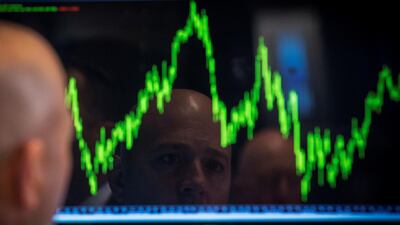Risk-on moods returned to financial markets this week. Stocks have been weighed down since the beginning of May as market participants started to consider the threat of inflation in the US. However, with recent comments from the Federal Reserve about committing to lower interest rates, risky assets caught a bid.
With the Fed in the midst of a mammoth $120 billion monthly spending programme and US consumption on the uptick as the Covid-19 pandemic starts to wane amid increased vaccination rollout, inflationary threats were always on the cards for the US economy.
It is this threat that many in the Fed and mainstream media are referring to as “transitory inflation”, which has kept any gains in riskier assets and particularly growth stocks in check this month.
Inflation remains one of the key parameters of the Fed’s dual mandate, along with maximum employment. The recent consumer spending spree has seen US inflation tick above 4 per cent in the April reading and a recent survey of consumers showed inflation expectations were at their highest level since 2014.
Google trends show that inflation searches have quadrupled in the past two weeks. Consider this theme to dominate investor sentiment in the lead up to summer.
Gold has been a particular beneficiary of the inflation theme. The precious metal has broken out to near five-month highs at $1,869 at the time of writing. That’s a move of more than 5.6 per cent in May alone.
Historically, gold has been seen as a hedge against inflation and this sentiment will see the precious metal make a clear test of the $1,874 channel, which is a key resistance level. A break of this level will expose $1,955 to $2,000 levels in the weeks ahead.
While it is too late to initiate long positions, I would wait to see how the inflation theme plays out before triggering fresh long positions and still see $1,670 levels as an optimal entry for gold bulls.
Looking ahead to June, we have a couple of key central bank meetings, which could shed more light on the direction of markets in the second half of this year. The US Fed will reconvene on June 15 and 16 and the European Central Bank is scheduled to meet on June 10.
If we start with the latter, the improving euro-area economic outlook could see the ECB announce a slowdown in the pace of its pandemic programme asset purchases, while I don’t expect the Fed to change its wait-and-watch accommodative approach.
EUR-USD on the Dubai Gold and Commodities Exchange has continued its strong gains – the pair is currently trading shy of 1.22 levels. Technically, next up is the psychological level of 1.24, which we last saw at the end of 2020.
While it will not be a straightforward run towards 1.24, I expect EUR-USD to fulfil this level by the end of the third quarter of this year. GBP-USD on DGCX has moved towards 1.42 levels, with 1.4360 the next key resistance level.
Earnings continue in the US this week. At the time of publishing, Walmart and Baidu would have announced and Cisco is due later on Wednesday. Due to the inflationary theme mentioned earlier, I don’t have much confidence that beats on earnings will necessarily help stocks.
Instead, I would expect daily gyrations to be driven by investor sentiment on the back of this reflationary theme. I also expect value stocks to outperform growth stocks in the short term.
Finally, crypto markets traded lower as billionaire Elon Musk pulled the plug on Bitcoin-backed purchases by his company Tesla. In a sensational move, Mr Musk backtracked on his stance from earlier this year.
After hitting as high as $4,300, Ethereum finds itself trading below $3,500 and Bitcoin is trading near its February lows of $44,000.
Gaurav Kashyap is head of futures at EGM Futures DMCC. The views and opinions expressed in this article are those of the author and do not reflect the views of Equiti


